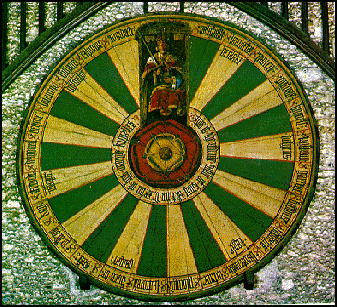|
For more than eight centuries, poets
and writers have been telling stories
about King Arthur. From lost legends
and scraps of history, from facts and
folklore, they have fashioned one of the
greatest epics in all literature, full of the
world's splendours, heroic loves and
spiritual quests. This magical and
mysterious world is founded on the
figure of an obscure Welsh princeling,
about whom we know nothing for
certain. Arthur may have been the last
Roman general of Britain, the first of
those Welsh guerrilla fighters who
defied the English until well into the
Middle Ages, or a northern prince from
Scotland who was later adopted by the
Welsh living in Wales. If there was a
real Arthur, he lived in the sixth or
seventh century AD; he may not have
been of royal blood, but he was
acclaimed as a hero or leader. That is all
that we can say with any confidence
about the historical grain of sand in the
poetic oyster.
Arthur's magic is that he is a
shape-shifter; but he does so subtly and
slowly, changing his form to suit the
needs of each new age. We know very
little about the history of Britain
between AD 400 and AD 600, between
the ending of Roman Rule and the
emergence of the Saxon kingdoms. We
have no contemporary histories, only
traditions and rumours and the
occasional voice crying in the
wilderness of a writer whose work
happens to survive in this or that
fragment of a manuscript. To look for a
historical Arthur in such period is a
hopeless task: the scraps of evidence
are few and far between, and there is no
context in which we can fit them.
In fact, the only thing that is generally
agreed about the historical Arthur is
that if he did exist, it was in the period
between AD 450 and AD 650. Who he
was, what he did, where he lived are
questions which can only be answered
with guesses.
|


